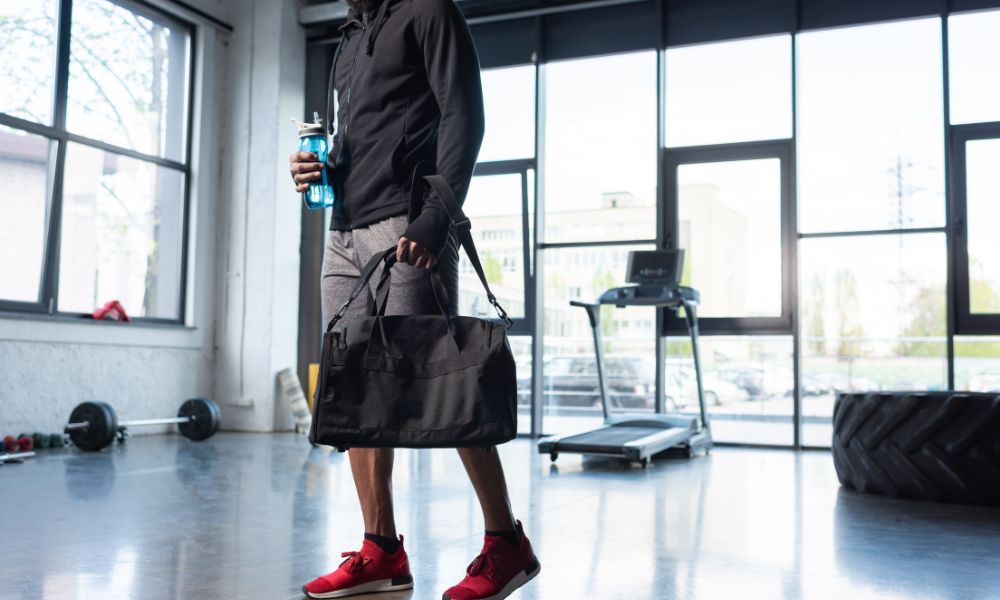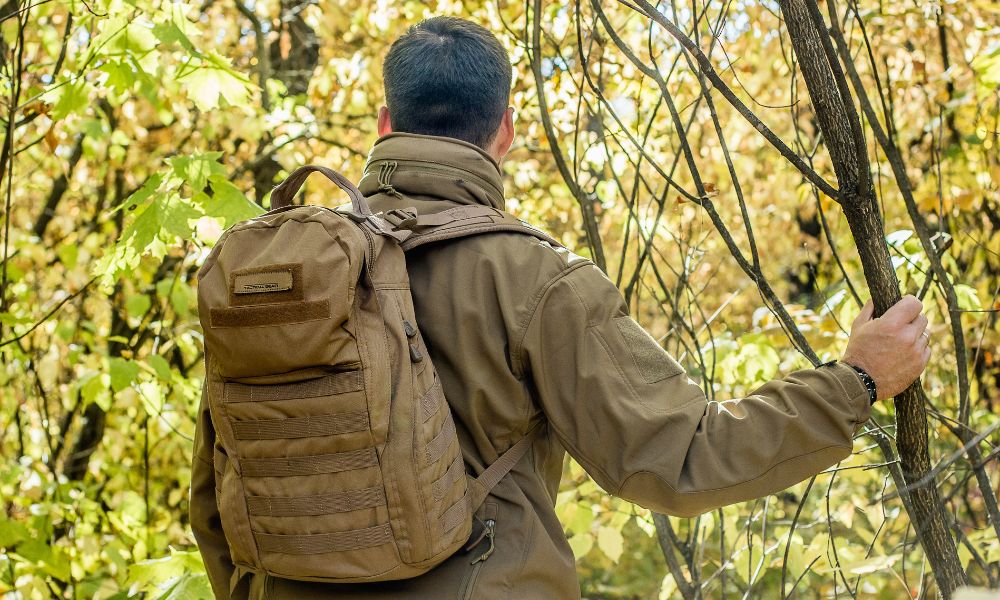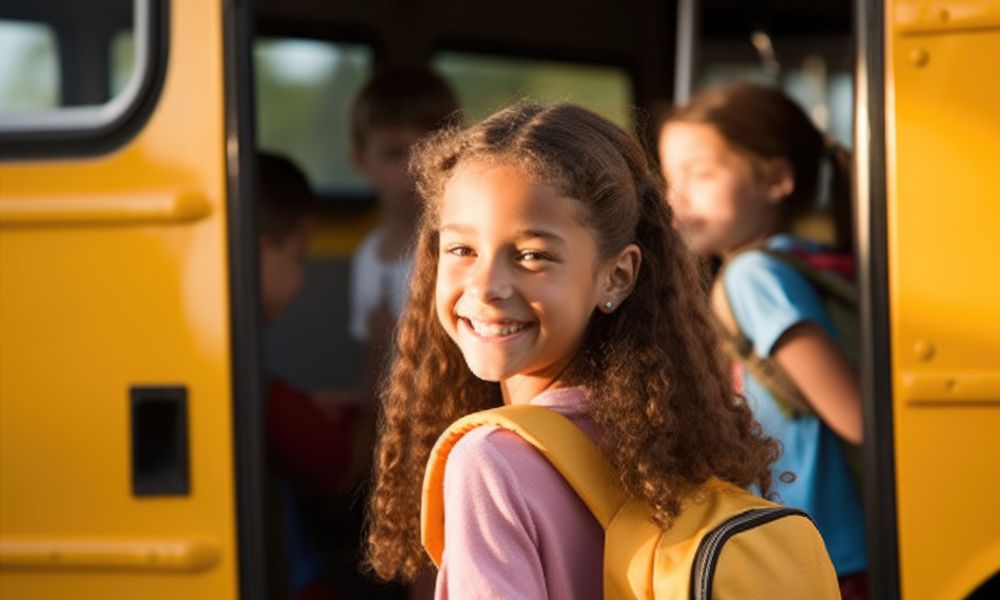Back-to-school shopping is usually hectic for many parents. The list of supplies is overwhelming, the crowds are large, and the goal of finding the best deal may have you scouring for coupons. But none of those tasks matter if your kids don’t have the most integral item to hold their goodies.
A backpack is the meat and potatoes of school shopping, and learning what to pack in a kid’s backpack for school beforehand gives you a good place to start looking for one.
ID or Emergency Card
Having your child carry an emergency ID or notecard is wise, whether it’s their first day of preschool or their last day of high school. The card should state their name, address, and emergency contact information to help school staff and emergency responders know who to contact if something is wrong.
While the school will have your information on file, it’s a lot easier to swiftly act when the information is more readily available for those who need to know it. Every second counts in an emergency and staff members relaying messages to one another about who to call could waste precious time.
Medication
Along with their emergency information, include any medications your child must take, how much, when, and any other vital instructions. This medication could mean an EpiPen or an inhaler for some children. Other over-the-counter medications, like pain relievers, also come in handy if they have a splitting headache they can’t get rid of. Of course, always abide by the recommended dosage based on your child’s age.
Change of Clothes
A spare set of clothes is more relevant for younger, pre-adolescent children, but having an extra set couldn’t hurt if your kids are older. Students in preschool and kindergarten will invent new ways to dirty their attire or occasionally have an accident.
An extra pair of pants, underwear, and a shirt will keep you from leaving work or home to come to the rescue with a new set of clothes. Including large Ziploc bags with these extra articles of clothing allows your child or teacher to place the dirty garments in them, keeping the wet, stain-riddled clothing separate from any essential supplies.
Water Bottle
Hydration among all ages is vital; ergo, packing a water bottle is necessary for all children. Although drinking fountains may be available on campus, the idea of sipping lukewarm water from a spot where everyone else is sipping doesn’t sound all that appealing, especially when they are a hotbed for germs.
Investing in a quality water bottle that’s leakproof and keeps the water cold throughout the school day will make your child happy and help them stay hydrated. Many backpacks have a specific attachment that can hold a water bottle to keep it separate from things like papers and electronic devices in case it leaks.
Snacks
Young children require snacks semi-regularly to stay awake and active throughout the school day. More importantly, a satisfied belly should make them pleasant to be around, keeping their irritability at bay. They may want every fruit snack or sweet treat known to man, but you’re better off including, for example, chopped vegetables, string cheese, and hummus to give them the nutrients their body needs.
High school students also need snacks to keep them alert and satiated, especially if their lunchtime occurs later in the day. A grumbling stomach can get in the way of learning. No one will pay attention to a Shakersperan sonnet if all they can think about is fulfilling their appetite.
Hand Sanitizer
Kids can get into some gnarly things when they are young and curious. Recess time could have one of them venturing off and digging through the dirt like they are archeologists. While that’s fun for them, the bacteria and germs that could remain on their digits are easily spreadable.
A small bottle of hand sanitizer can stay outside the bag, giving your child easy access to a squirt or two if they or their classmates have icky hands. It’s not 100% failproof, but it should minimize their risk of contracting an illness throughout the year.
School Essentials
The school essentials list will have some similarities between those starting and those finishing their academic career.
A young person’s backpack will likely have more items but not as much heft as a high schooler’s. Arts and crafts tools, cleaning materials, and extra attire don’t add much weight to a backpack. On the other hand, a high school student will have heavy textbooks, laptops, or tablets that can add weight in a hurry.
A few commonalities exist between the two, like folders, writing utensils, and notebooks that you can buy in bulk.
Personal Items
You’ve covered your bases with the essentials; now it’s time to shift our focus to personal items. High school students require more personal items than younger kiddos would. Items like a cell phone, wallet, keys, and headphones are all things someone younger wouldn’t necessarily need.
Fortunately, many of those items can go into designated compartments in their backpacks that will keep them secure, lessening the chance of them losing something. After all, nothing will instill panic more than losing a phone or wallet, so it’s critical that those have a safe home.
More fragile items like glasses can also go in separate pockets to prevent a large textbook from crushing them.
How To Pack the Backpack
We will tell you how to pack the bag to ensure maximum comfort for your child to wrap things up.
As always, the heaviest objects need to be at the bottom. This placement gives the backpack a strong base and prevents the destruction of smaller, delicate items. You can always remove a book or two and have them carry the book in their arms if the weight is too much to bear. A rolling backpack can do wonders for their developing bodies if allowed, and it’s more fun to bring along.
Check the straps to verify they’re wearing the backpack correctly. The weight distribution should be equal, but if it isn’t, they may lean to one side more than the other. Cushioned straps further help your child from back and neck discomfort.
A backpack should feel snug on their backs but not so tight that it’s uncomfortable to wear. Carrying a backpack haphazardly with one strap on and the other off can throw their spine out of whack. The backpack should not fall below their hips. It’s not the right backpack for your child if it extends further than that.
The rule of thumb is a backpack shouldn’t be more than 10% of your child’s body weight. While it’s safe to follow that rule, the logic does have its flaws. You’re better off getting them a size and age-appropriate backpack and never packing it so that it exceeds ten pounds when they are younger.
Now you know what to pack in a kid’s backpack for school, and you can confidently take those precious “first day of school” photos to kick off the year. WOLFpak’s mini backpacks make great children’s backpacks for the upcoming school year and beyond! Plus, they can add some of their style to their bag with our patented patches!

Read more

These five brilliant gym bag hacks you may not know can help easily solve your entangled headphones, smelly clothes, and other irritating concerns.

Learn the advantages of using a backpack for traveling. Having a backpack is a convenient way to carry all sorts of belongings and keep them near you.












Leave a comment
This site is protected by hCaptcha and the hCaptcha Privacy Policy and Terms of Service apply.